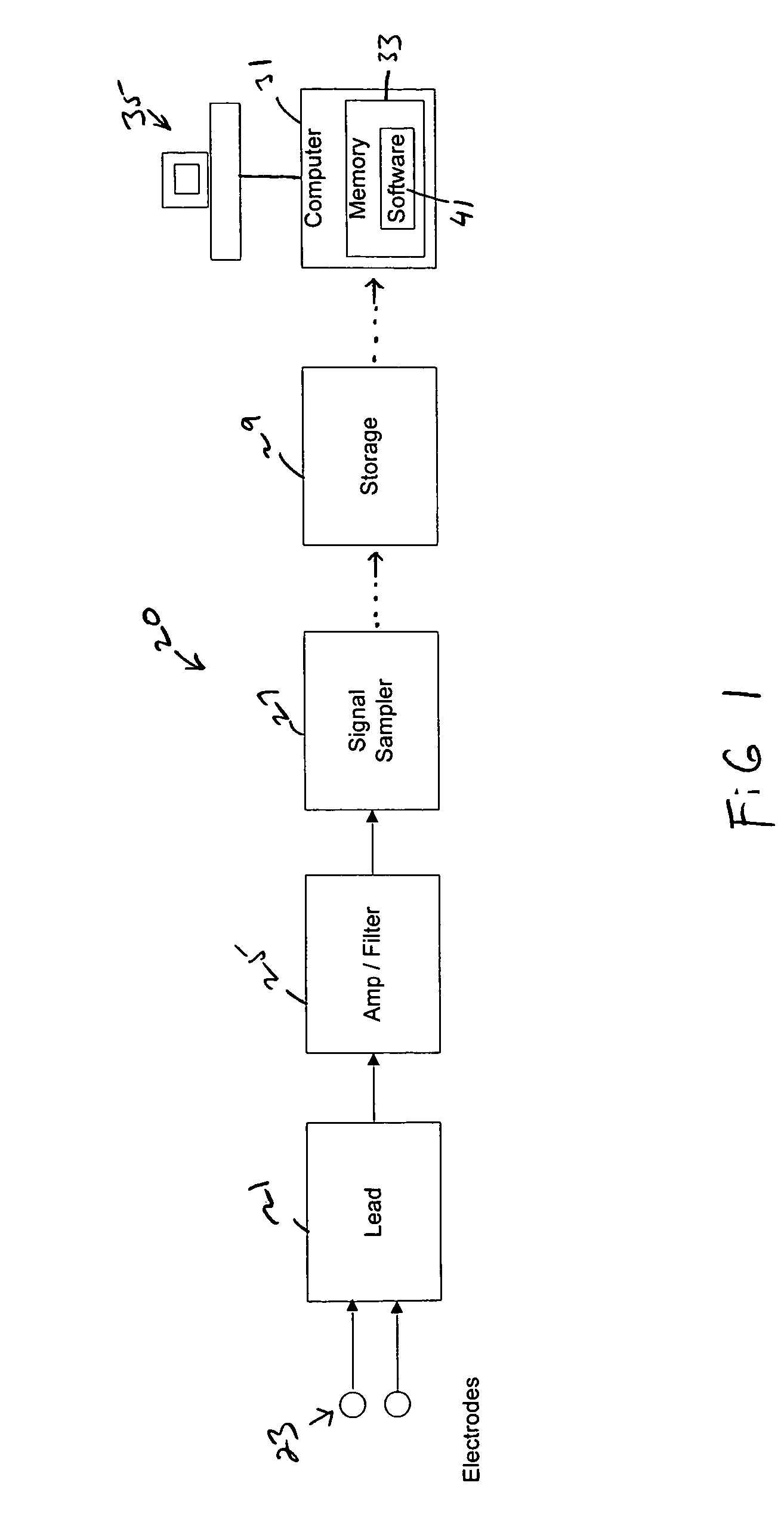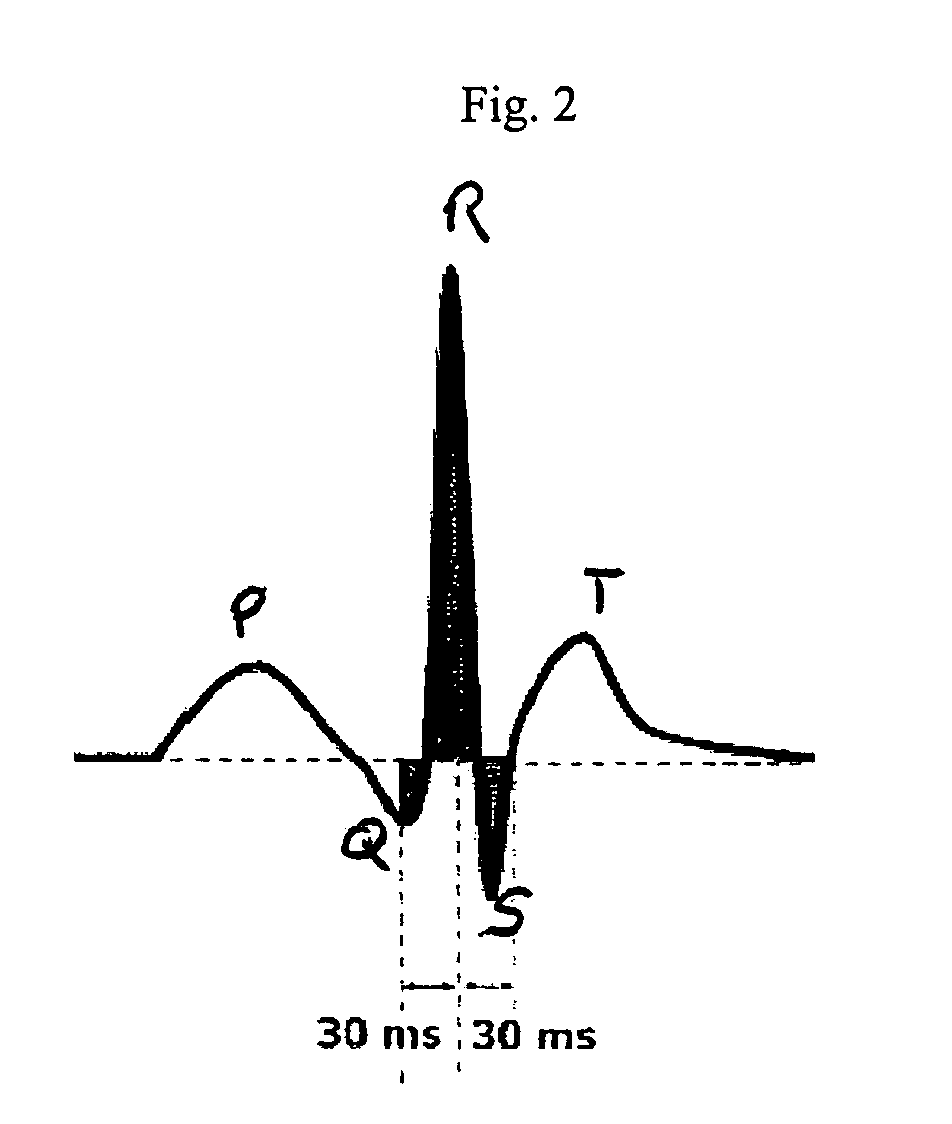System, software, and method for detection of sleep-disordered breathing using an electrocardiogram
an electrocardiogram and sleep-disordered breathing technology, applied in the field of diagnosis of sleep-disordered breathing, can solve the problems of affecting normal respiration, affecting the normal breathing of patients, so as to achieve high sensitivity and specificity in identification.
- Summary
- Abstract
- Description
- Claims
- Application Information
AI Technical Summary
Benefits of technology
Problems solved by technology
Method used
Image
Examples
Embodiment Construction
[0036]The present invention will now be described more fully hereinafter with reference to the accompanying drawings, which illustrate embodiments of the invention. This invention may, however, be embodied in many different forms and should not be construed as limited to the illustrated embodiments set forth herein. Rather, these embodiments are provided so that this disclosure will be thorough and complete, and will fully convey the scope of the invention to those skilled in the art. Like numbers refer to like elements throughout. Prime notation, if used, indicates similar elements in alternative embodiments. Note, the term “R-wave peak amplitude morphology” for a plurality of R-wave peaks refers to variations in the magnitude of a plurality of substantially consecutive R-wave peak amplitudes. The term “QRS complex pulse area morphology” for a plurality of QRS complex pulses refers to variations in at least a portion of the area for each of a plurality of QRS complex pulse associat...
PUM
 Login to View More
Login to View More Abstract
Description
Claims
Application Information
 Login to View More
Login to View More - R&D
- Intellectual Property
- Life Sciences
- Materials
- Tech Scout
- Unparalleled Data Quality
- Higher Quality Content
- 60% Fewer Hallucinations
Browse by: Latest US Patents, China's latest patents, Technical Efficacy Thesaurus, Application Domain, Technology Topic, Popular Technical Reports.
© 2025 PatSnap. All rights reserved.Legal|Privacy policy|Modern Slavery Act Transparency Statement|Sitemap|About US| Contact US: help@patsnap.com



